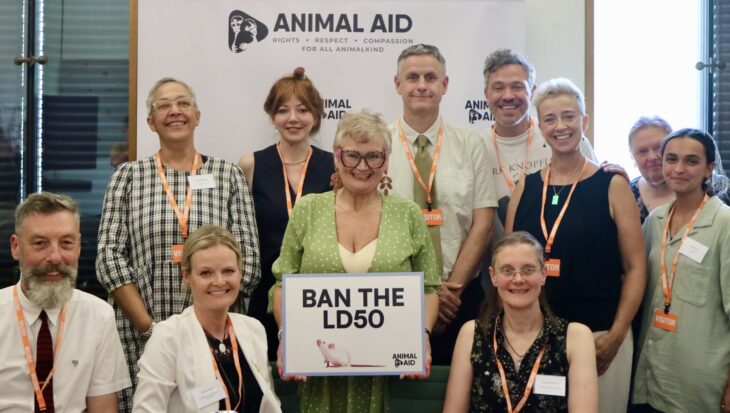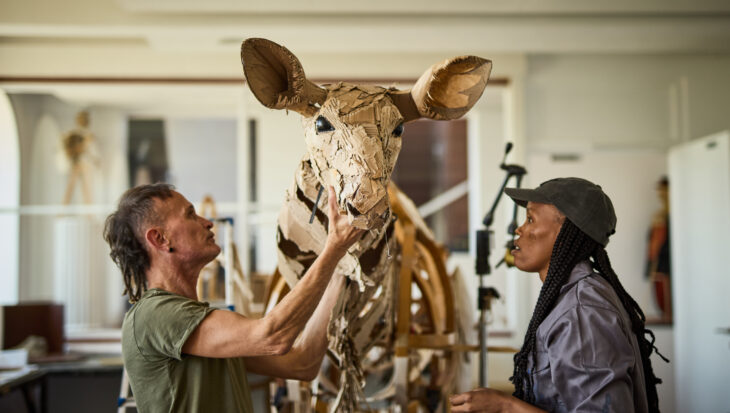Animal Aid in parliament to discuss ending animal tests
Yesterday, Animal Aid hosted a roundtable in Westminster, to meet with MPs and other invited guests to discuss the ending the LD50 and other animal tests.
Posted 02 Jul 2025

Posted on the 18th June 2008
The British pig farming industry makes repeated claims that it has some of the highest welfare standards in the world. In March and April 2008, as part of a major investigation, Animal Aid visited 10 English pig farms and found squalor, filth, death and disease.
The British pig farming industry makes repeated claims that it has some of the highest welfare standards in the world. Its promotional message – which recently featured in a number of prominent national newspaper advertisements – bolsters this claim by showing healthy-looking pigs on thick straw or out in the fields with plenty of space to roam.
In March and April 2008, as part of a major investigation, Animal Aid visited 10 English pig farms spanning five counties: Cornwall, Somerset, Lincolnshire, North Yorkshire and East Riding of Yorkshire. Instead of idyllic images of straw-filled pens amidst leafy trees and bathed in sunlight, we found squalor, filth, death and disease. Where the industry portrays pigs growing up outside with acres of space to roam, we found dead and dying piglets living in utterly barren, overcrowded pens. In the promotional images, pigs can root around in the earth. In reality, these inquisitive, lively and intelligent animals often had nothing but a metal chain – and sometimes nothing at all – to stimulate them and help fulfil their basic instincts.
Two of the farms we visited have board members of the British Pig Executive as their company directors. Others are owned or directed by individuals with positions of influence within the industry, by being connected to the National Pig Association, the Pig Industry Development Scheme, the European Pig Producers’ Association or the National Farmers’ Union. One farmer currently serves on the government’s official advisory body, the Farm Animal Welfare Council (FAWC). Another is a former FAWC member.
According to one press advert, the Quality Pork Standard mark ‘is proof that farmers care about the welfare of their animals’. But the proof of how welfare-friendly British farms are lies not with industry propaganda but with photos and film taken on unannounced visits to real farms. And further proof of the low regard that farmers have for the welfare of pigs can be found in their tradition of opposing legislative moves that would raise welfare standards. Dry sow stalls and tethering continued to be used for an additional three years when the Pig Husbandry Bill was sabotaged. And even when welfare laws are passed – such as the ban on routine tail docking – they continue to be flouted. Pigs at all ten farms we visited appear to have undergone this mutilation.
Animal Aid Head of Campaigns, Kate Fowler-Reeves says:
‘The pig farming industry has recently launched a media offensive to persuade the public that they should buy British because of the exceptionally high welfare standards on British pig farms. But rarely has there been such a huge disparity between marketing hype and truth.
‘If leading industry figures sincerely believe that welfare standards on typical British pig farms are so high, why do they not use images from their own farms in advertising campaigns? The answer surely lies in the obvious: if dead, dying, sick and injured pigs, existing in filthy, cramped conditions with nothing but a chain – and in some cases, nothing at all – to stimulate their inquisitive minds were shown, consumers would be appalled.
But while the idealised vision is perpetuated through expensive PR offensives, and while ‘celebrity’ farmers plead for the future of ‘high welfare’ pig farms, the wretched truth is pushed aside: that welfare standards on typical British pig farms are abysmally poor.’
Yesterday, Animal Aid hosted a roundtable in Westminster, to meet with MPs and other invited guests to discuss the ending the LD50 and other animal tests.
Posted 02 Jul 2025

Have you heard? A breathtaking arts initiative, ‘The Herds’ will be arriving in London this Friday.
Posted 27 Jun 2025
